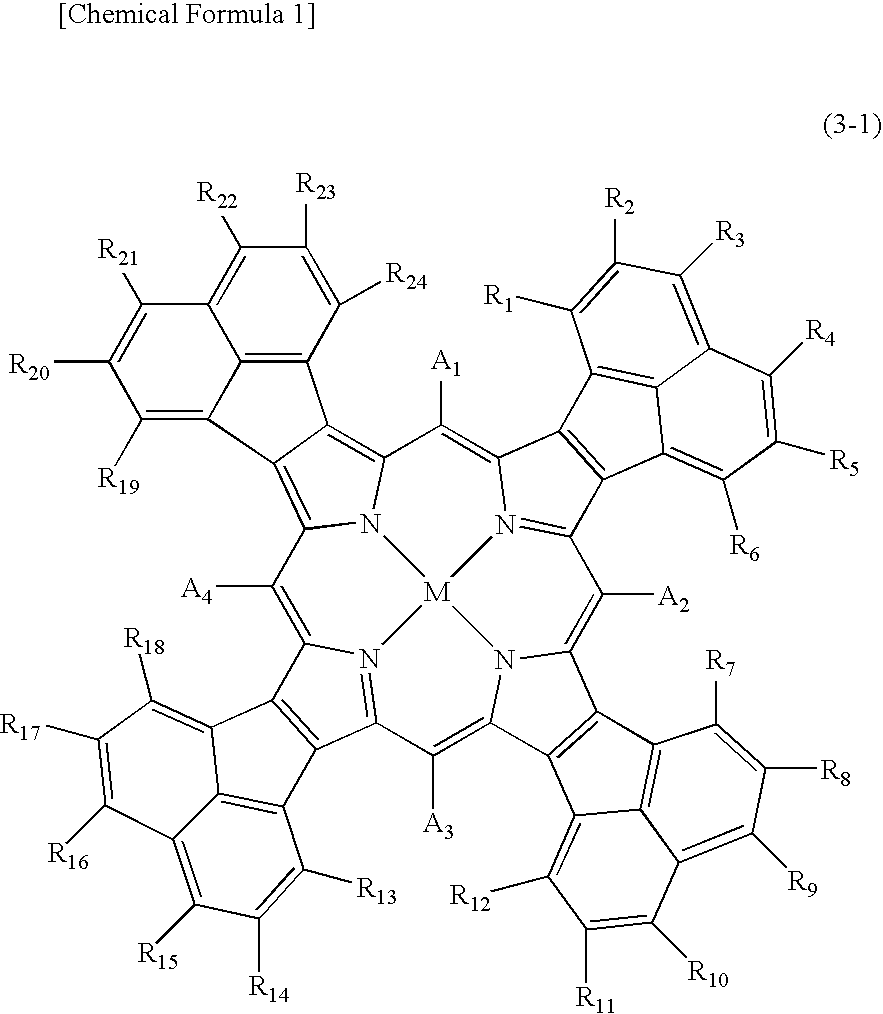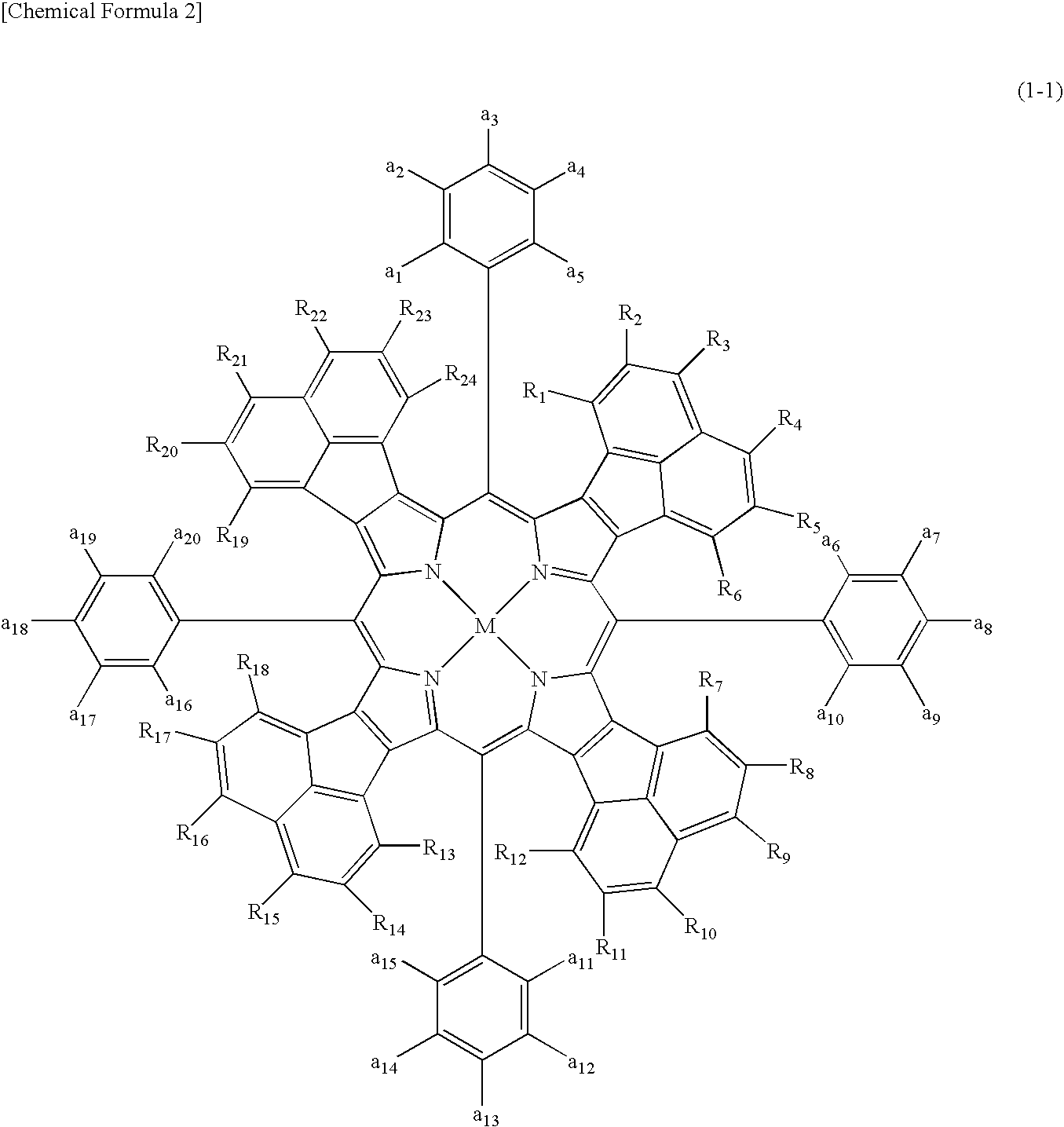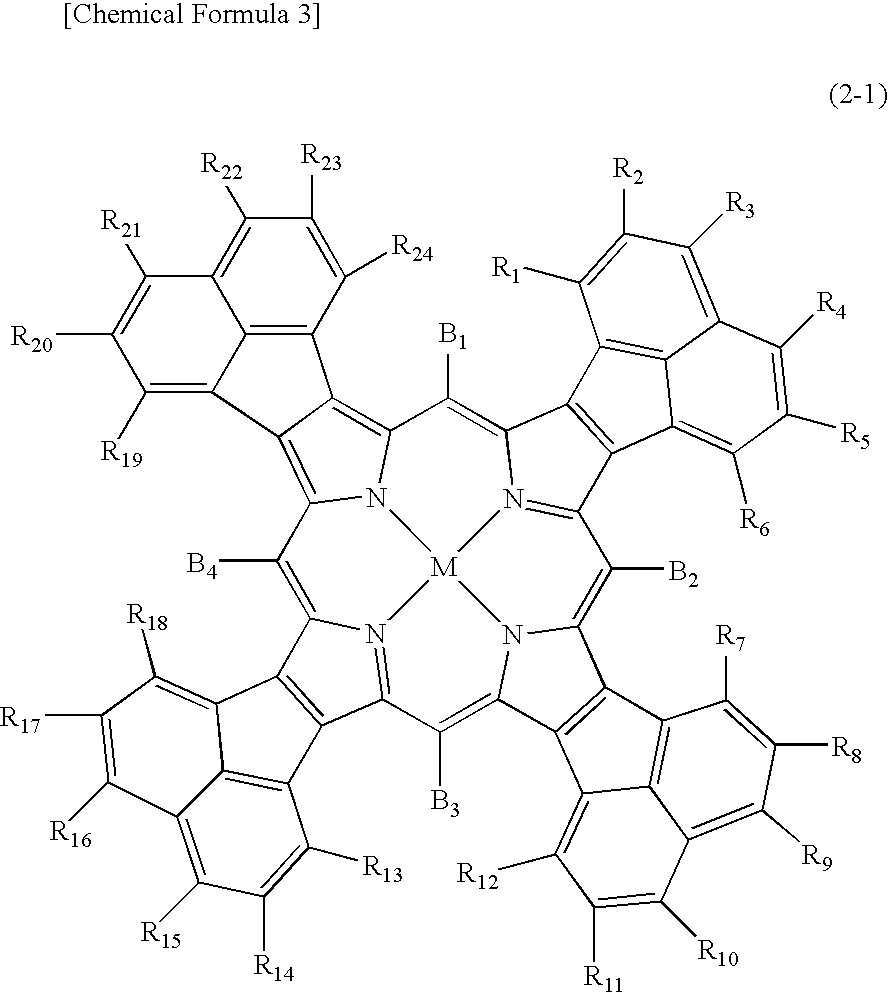Optical Filter and Its Applications, and Porphyrin Compound Used in Optical Filter
a technology which is applied in the field of optical filters and porphyrin compounds used in optical filters, can solve the problems of reducing the color reproductivity (color purity) of an image, reducing the brightness of a display unit, and reducing the external light. , to achieve the effect of reducing unnecessary light, excellent durability and improving contrast in a bright pla
- Summary
- Abstract
- Description
- Claims
- Application Information
AI Technical Summary
Benefits of technology
Problems solved by technology
Method used
Image
Examples
example 1
Compound Represented by the Above Formula (1-1) and Optical Filter Using the Compound
example 1-1
[0166] In a nitrogen atmosphere, into a flask were introduced 5.2 g of p-decyloxybenzaldehyde and 1 L of chloroform. Then, 4.0 g of acenaphthopyrrole was added thereto and the resulting mixture was stirred. 0.55 g of BF3.Et2O was added thereto and the mixture was stirred for 4 hours, and then 3.3 g of 2,3-dichloro-5,6-dicyano-1,4-benzoquinone was added and the mixture was stirred for 2 hours. The solvent was distilled off and then the residue was purified with a silica gel column. In the purification, chloroform (1% triethylamine contained) was used as a developing solution, whereby 7.8 g of a compound represented by the following formula (1-A) was obtained.
[0167] The maximum absorption wavelength in chloroform of the compound was 567 nm, while the gram absorption coefficient was 113,000.
[0168] Analysis data: 1H-NMR
[0169]δ (ppm): 8.65 (d, 8H), 7.62 (d, 8H), 7.42 (d, 8H), 7.20 (t, 8H), 5.88 (d, 8H), 4.33 (m, 8H), 2.03 (m, 8H), 1.63 (m, 8H), 1.5-1.2 (m, 48H), 0.93 (t, 12H).
example 1-2
[0170] In a nitrogen atmosphere, into a flask were introduced 1.5 g of the obtained compound represented by the above formula (1-A), 0.32 g of nickel (II) acetate and 300 ml of DMF. The resulting mixture was stirred at 120° C. for 2 hours, cooled down, and then extracted with chloroform and washed with water. The solvent was distilled off and then the residue was purified with a silica gel column. In the purification, a mixed solvent of toluene and hexane (mixing ratio: 7:3, volume) was used as a developing solution, whereby 0.4 g of a compound represented by the compound No. 1-6 (Table 1-1) was obtained.
[0171] The maximum absorption wavelength in chloroform of the compound was 536 nm, while the gram absorption coefficient was 135,000.
[0172] Analysis data: 1H-NMR
[0173]δ(ppm): 8.36 (d, 8H), 7.61 (d, 8H), 7.33 (d, 8H), 7.18 (t, 8H), 5.80 (d, 8H), 4.29 (m, 8H), 2.01 (m, 8H), 1.64 (m, 8H), 1.5-1.2 (m, 48H), 0.92 (t, 12H).
PUM
| Property | Measurement | Unit |
|---|---|---|
| wavelength range | aaaaa | aaaaa |
| wavelength range | aaaaa | aaaaa |
| wavelength range | aaaaa | aaaaa |
Abstract
Description
Claims
Application Information
 Login to View More
Login to View More - R&D
- Intellectual Property
- Life Sciences
- Materials
- Tech Scout
- Unparalleled Data Quality
- Higher Quality Content
- 60% Fewer Hallucinations
Browse by: Latest US Patents, China's latest patents, Technical Efficacy Thesaurus, Application Domain, Technology Topic, Popular Technical Reports.
© 2025 PatSnap. All rights reserved.Legal|Privacy policy|Modern Slavery Act Transparency Statement|Sitemap|About US| Contact US: help@patsnap.com



